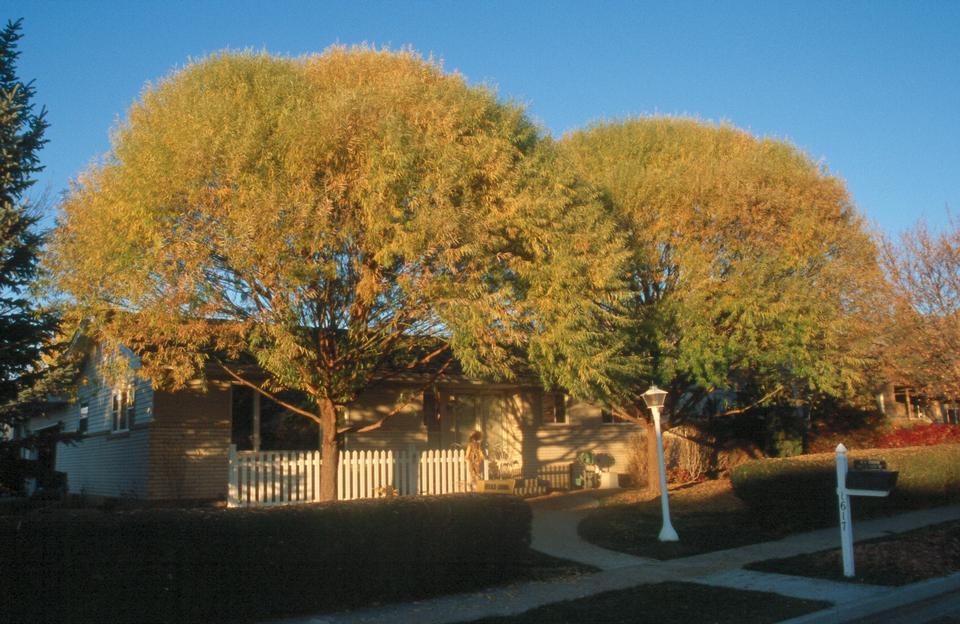Willow, Hankow ('Globe Navajo', etc.)
Salix matsudana 'Navajo'
Salicaceae - Willow
Description
See also Peachleaf Willow description.
Leaves: Alternate; simple; bright green above, paler beneath; narrow-lanceolate; 2" to 4" long, 1/4" to 1/2" wide; deciduous.
Twigs/buds: Twigs yellowish when young, becoming yellowish-green to greenish-brown with time; hairless.
Flowers/fruit: Flowers dioecious; little information available about flowers.
Bark: Yellowish initially, becoming yellowish-green to brown when mature.
Wood: Information unavailable.
General: Native to China. Very popular large tree because of its broad, evenly rounded canopy. Like many other willows, grows fast but is short-lived. May be insect and/or disease prone, especially when stressed. Weak wood and/or branch structure. Prefers abundant water. Rarely should be planted, though limited use in specific situations may be justified.
Landscape Use: Tougher and hardier than many willows, and thus overused in Utah and the West. Rounded form and bright green leaves are nice from far away, but weak wood and susceptibility to slime flux and other disease and insect problems mean it should be planted less. Zones 4-9. Many other cultivars and hybrids of Hankow willow also exist and some are planted in Utah. An example is 'Golden Curls', a hybrid between S. alba var. 'Tristis' and S. matsudana var. 'Tortuosa' that has strongly curled and slightly weeping stems.
Cultivar: 'Navajo'.
Characteristics
General
| Family | Salicaceae - Willow |
|---|---|
| Cultivar Availability | Yes |
| Hardiness Zone | 4-9 |
| Type | Broadleaf |
| Utah Native | No |
Growth
| Growth Rate | High |
|---|---|
| Mature Height | Medium |
| Longevity | Low |
| Is Good Under Power Lines | No |
| Crown Shapes | Rounded |
Ornamental
| Bark | No |
|---|---|
| Fall Color | No |
| Flowers | No |
| Foliage | Yes |
| Fruit | No |
Tolerance
| Shade | Low |
|---|---|
| Salt | High |
| Drought | Low |
| Poor Drainage | High |
| Alkalinity | High |
| Transplanting | High |



